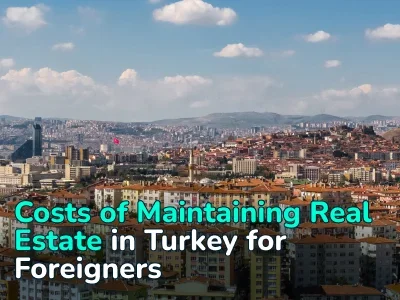
Jobs in Italy: Salaries, Vacancies and How to Find a Job for a Foreigner
Italy attracts job seekers with opportunities across various sectors — from IT and fashion to tourism and agriculture. The country offers positions for both highly qualified professionals and those looking for seasonal employment. However, finding a job in Italy comes with challenges: language proficiency, visa processing, and market competition all require serious preparation.
From this guide, you’ll learn how to find employment opportunities in Italy, what to expect from the local labor market, and which professions will be in demand in 2025.
Pros and Cons of Working in Italy
Italy’s labor market generates over 1.5 million job openings annually, including permanent and seasonal roles across agriculture, industry, and high-tech sectors.
Pros of job opportunities in Italy:
- Social benefits. Official contracts provide 20–30 days of paid vacation, sick leave (up to 80% of salary), and INPS contributions (eligibility for pension after 20 years of work). In 2024, 70% of foreigners with contracts used these benefits.
- Employer support. In tourism (e.g., Rimini hotels), 40% of companies offer housing; in IT (e.g., Milan), 25% of firms fund Italian language courses. The average course cost is €300/month.
- Career prospects. With Italian at B2 level and relevant experience, average monthly Italian wages reach €4000—7000 in healthcare and €2500—4500 in IT. In 2024, 15% of expats were promoted during their first year.
- Seasonal visas. The 2025 quota is 82,000, with permits valid up to 9 months. Completing two seasonal contracts can lead to residency (permesso di soggiorno).
- Openness to foreigners. In tourist regions (e.g., Lazio, Tuscany), 80% of employers hire candidates without experience, provided they have basic Italian (B1) or English.
- Quality of life. Average monthly living costs (housing, food) are €1200 in Rome, €800 in Sicily. Schengen access facilitates travel within Europe.
Cons of working in Italy:
- Language barrier. 90% of jobs in customer service and the public sector require Italian at the B1—B2 level. Without the language, only low-paid positions are available (€800—1200/month).
- Bureaucracy. Nulla Osta permits take 40–60 days, D visas cost €116, and degree recognition (nostrification) costs €200—1000 and takes 6–12 months. In 2024, 30% of visa applications were rejected due to errors.
- Competition. Youth unemployment is at 20%. Italians have priority for 70% of jobs in the public sector and small businesses.
- Regional disparities. Salaries in southern regions (e.g., Campania) are 25% lower than in the north (e.g., Lombardy): €1500 vs €2500/month. Job availability in the south is half that of the north.
- Relatively high taxes. The income tax rate in Italy ranges from 23% to 43%, depending on earnings.
- Temporary contracts. 60% of job offers for foreigners are fixed-term (3–12 months), with extensions granted in 50% of cases.
- Illegal employment. In 2024, 10% of foreigners worked without contracts, risking deportation and fines up to €10,000. Wages for undeclared work are €600—900/month.
- Qualification recognition. For doctors and lawyers, nostrification costs €500—1000 and may take up to a year. Only 65% of applications are approved on the first try.
Average Salaries in Italy
As of 2025, the average gross annual salary in Italy is approximately €27,000—€29,300, which translates to a net monthly income of around €1700—€2440 after taxes.
There is no statutory minimum salary in Italy, but collective labor agreements (contratti collettivi) set a baseline salary of €1000—€1200/month for unskilled positions.
Average salary in Italy by Region:
|
Region |
Gross salary (€ / month) |
Net salary (€ / month) |
|
Lombardy (Milan) |
€2500–3000 |
€1 700–2100 |
|
Veneto (Venice, Verona) |
€2200–2600 |
€1500–1800 |
|
Lazio (Rome) |
€2100–2500 |
€1450–1750 |
|
Tuscany (Florence) |
€2000–2400 |
€1400–1700 |
|
Campania (Naples) |
€1500–1800 |
€1100–1300 |
|
Sicily (Palermo) |
€1400–1700 |
€1000–1200 |
High-paying jobs in Italy are for doctors and software engineers, but they must have their degrees officially recognized (nostrification) and demonstrate C1-level proficiency in Italian. Unskilled jobs are accessible without Italian language skills, but typically come with lower pay.
Average Italy monthly salary by profession:
|
Profession |
Gross salary (€ / month) |
Net salary (€ / month) |
|
Doctor / Surgeon |
€4000–7000 |
€2500–4000 |
|
IT specialist / Programmer |
€2500–4500 |
€1700–2800 |
|
Engineer (mechanical, electrical) |
€2500–3500 |
€1700–2400 |
|
Lawyer |
€3000–5000 |
€2000–3200 |
|
Nurse / OSS |
€1800–2500 |
€1300–1800 |
|
Language teacher |
€1500–2200 |
€1100–1600 |
|
Waiter / Bartender |
€1200–1600 |
€900–1200 |
|
Farm worker / Harvester |
€800–1200 |
€700–1000 |
|
Caregiver (Badante) |
€600–1000 |
€500–800 |
|
Construction worker / Laborer |
€1300–1700 |
€1000–1300 |
|
Truck driver |
€1800–2000 |
€1300–1500 |
|
Housekeeper / Cleaner |
€1000–1400 |
€800–1100 |
Taxes in Italy
Taxes in Italy have a significant impact on net wages, with 25–40% of gross earnings typically withheld to cover tax obligations. The primary tax is the personal income tax (IRPEF), paid by both Italian citizens and residents—i.e., individuals who spend more than 183 days per year in the country.
Personal income tax in Italy rates:
- Up to €28,000/year — taxed at 23%.
- €28,001—50,000 — taxed at 35% on the amount exceeding €28,000.
- Over €50,000 — taxed at 43% on the amount exceeding €50,000.
In addition to income tax in Italy, workers are subject to regional and municipal taxes:
- Regional tax (Addizionale Regionale): ranges from 1% to 4%, depending on the region.
- Municipal tax (Addizionale Comunale): varies by municipality, from 0.2% to 0.9%.
Employees also contribute to the INPS (Istituto Nazionale della Previdenza Sociale) social security system, with mandatory contributions of 9–10% of gross salary. These cover pensions, sick leave, and unemployment benefits.
Foreign residents may be eligible for the IRPEF Bonus — a monthly tax credit of €100 for employees earning up to €28,000/year. This benefit helps reduce overall liability of income tax in Italy for foreigners.
To apply for this and other tax deductions or credits, it is necessary to file an annual tax return (dichiarazione dei redditi) through a licensed tax advisor (commercialista).
Work Visa for Italy
Citizens of the European Union (EU), the European Economic Area (EEA), and Switzerland have the right to work in Italy without the need for a work visa, while others are required to obtain an Italian job visa. The primary visa type for this purpose is the Type D (national) visa. To apply for it, the applicant must first receive a formal job offer from an Italian employer.
Once a job offer is secured, the employer is responsible for initiating the work permit process by submitting a request to the Unified Immigration Desk (Sportello Unico per l’Immigrazione). The employer must prove that no suitable candidates are available from within Italy or other EU countries, as EU nationals have hiring priority.
In Italy, work permits for non-EU nationals are subject to strict government-imposed quotas. For 2025, approximately 151,000 work permits are available, including 82,000 for seasonal jobs. Italian work permit processing time is 40–60 days, after which the employee can submit their visa application to the Italian consulate in their home country.
Required documents for a Type D Italian work visa:
- Valid passport (minimum 6 months remaining).
- Signed employment contract.
- Original and copy of Nulla Osta (work authorization).
- Criminal record certificate, translated and legalized.
- Medical certificate confirming absence of infectious diseases.
- The bank statement shows a minimum of €1500 to prove financial self-sufficiency.
The consular fee is €116, and the Italy work visa processing time can take up to 30 days. Upon arrival in Italy, the individual must apply for a residence permit (permesso di soggiorno) within 8 days at the local police headquarters (Questura). The cost of the permit ranges from €40 (for 6 months) to €100 (for 2 years). In 2024, around 30% of Type D visa applications were rejected due to incomplete documentation or exceeding quota limits.
For seasonal jobs (typically in agriculture or tourism), foreign nationals can apply for a Italy seasonal work permit that is valid for up to 9 months. In 2024, 60% of these visas were issued for the agricultural sector, where wages ranged from €800 to €1200/month, often with housing and meals provided.
The application process is similar to that for the D visa, but it is easier to get an employment contract, and the document requirements are simplified. After two successful work periods with a seasonal work visa in Italy, a foreign worker becomes eligible to apply for a long-term residence permit.
Highly qualified professionals may apply for employment in Italy through the EU Blue Card program. Eligibility requires:
- A gross annual salary exceeding €40,000.
- A job contract valid for at least 12 months.
In 2024, Italy issued around 5000 Blue Cards, primarily in Lombardy and Veneto, home to many IT companies and medical institutions.
Additional requirements for Blue Card Italy employment visa:
- A university degree recognized in Italy.
- At least 3 years of professional experience.
- Nostrification is mandatory for doctors, lawyers, and engineers
(Cost: €200—1000, Time: 6–12 months).
The main advantage of the Blue Card is mobility across the EU: after 18 months of legal employment in Italy, the cardholder can work in other EU member states under simplified procedures.
Employment in Italy for Foreign Workers
While it is possible for foreigners to get an Italian job without local language skills, having B1—B2 proficiency significantly broadens employment opportunities, particularly in customer service, healthcare, and education sectors.
In contrast, the IT sector offers work in Italy for English speakers with at least a B2 level. Approximately 70% of IT job openings are in international companies, where English is the primary working language.
Italian hiring culture places a high value on personal connections. In the small business sector, up to 50% of jobs are filled through referrals. Foreign job seekers are encouraged to use LinkedIn to connect with recruiters and to attend career fairs in Milan and Rome.
To facilitate entry into the Italian job market, foreigners are advised to start with seasonal jobs, which involve fewer bureaucratic requirements and are accessible through major employment agencies such as Adecco and Manpower. After completing a seasonal contract, workers can apply for a permit and find job vacancies in Italy for foreigners.
The Digital Nomad Visa in Italy is available for non-EU citizens who work remotely as freelancers or employees of foreign companies. The visa allows individuals to live and work in Italy for up to one year, with the option to renew if key conditions remain fulfilled (income, insurance, accommodation).
Key requirements:
- Annual income of €28,000—€32,400 (approximately €2700/month, depending on the source).
- A university degree (minimum of 3 years) or at least 5 years of relevant professional experience.
- At least 6 months of prior remote work experience.
- Health insurance covering at least €30,000.
- Proof of accommodation in Italy (rental agreement or property ownership).
Digital Nomad Visa does not require a Nulla Osta for work in Italy for foreigners. However, holders of this visa are required to register for tax residency in Italy.
Job Search in Italy
Finding a job in Italy requires foreign applicants to understand the specific characteristics of the local labor market. Italian employers value initiative, personal connections, and applications tailored to local expectations.
Online platforms are the main tool for job searching, especially for foreigners who lack a local network. In 2024, approximately 200,000 job postings were published on such platforms, with around 30% open to foreign applicants.
Top platforms for job search in Italy:
- Indeed Italia — Features job listings in IT, tourism, and agriculture.
- InfoJobs — Suitable for mid-level positions, such as hotel administrators or logistics coordinators.
- Monster.it offers jobs in finance and engineering, mainly in Lombardy and Veneto.
- EURES is the EU-wide platform with job opportunities in Italy for foreigners.
- TEFL.com is a specialized platform for language teaching positions.
Agencies simplify the hiring process, especially for temporary or low-skilled jobs. They handle document processing, conduct initial interviews, and find a proper job offer in Italy for you.
Key employment agencies include:
- Manpower and Adecco — Offer short-term contracts in logistics and tourism.
- Gi Group — Focuses on manufacturing and construction; 60% of placements are for foreigners without Italian.
- Michael Page and Randstad — Target highly qualified professionals (e.g., engineers, finance experts) with Italian language skills.
Employment agencies in Italy typically retain up to 10% of the worker’s salary as a service fee. The application process takes 1–2 weeks. However, in small businesses (e.g., restaurants in Naples), recruitment agencies are less effective since employers prefer direct hiring.
Social media platforms—especially LinkedIn—are effective tools for qualified professionals and expats. A strong profile should highlight:
- Language proficiency (Italian B1—B2, English B2).
- Professional experience.
- Willingness to relocate.
Freelancing is a viable path for designers, translators, and IT specialists. Platforms like Upwork, Fiverr, and Malt help to find jobs in Italy for foreigners in freelance projects with rates between €20—50/hour.
To work legally as a freelancer in Italy, individuals must register for a Partita IVA (freelance tax number):
- Registration cost: €100—200.
- Taxes: 5–15% on income up to €85,000/year.
Frequently Asked Questions about Employment in Italy
What is the Italian work visa price?
As of 2025, citizens of non-EU countries applying for a Type D work visa for Italy should expect to pay several mandatory fees related to visa processing and supporting documentation. Main Italy work permit visa fees include:
- Consular fee for the type D visa. €116, payable at authorized visa centers such as VMS or Almaviva during submission.
- Visa center service fee. Ranges from €27.5–40, depending on the city of application.
- Document translation and legalization. Required documents (e.g., criminal record certificate, employment contract) must be translated into Italian and legalized with an apostille. The average cost per document is €20–50, but in Italy, the price will be higher.
- Medical insurance. A health insurance policy with minimum coverage of €30,000 is mandatory. Cost ranges from €2 to €5 per day, or about €60–150 per month, depending on the provider.
- Residence permit (Permesso di soggiorno). Must apply within 8 days of arriving in Italy. Cost varies from €40 to €100 depending on the validity period (6 months to 2 years).
What are the best-paid jobs in Italy?
The best-paid jobs in Italy are concentrated in the healthcare, IT, finance, and engineering sectors. These fields face a shortage of highly qualified professionals, which drives employers to compete by offering more attractive career opportunities in Italy.
Top high-income professions in Italy:
- Surgeons and specialized medical doctors (e.g. cardiologists, anesthesiologists): €80,000–120,000 per year.
- IT directors and AI engineers (particularly in machine learning, data science, and cybersecurity): €70,000–100,000 per year.
- Chief financial officers (CFOs) and Investment Bankers (especially in Milan’s financial sector): €60,000–90,000 per year.
- Engineers in aerospace and Energy Industries (including renewable energy and defense technologies): €50,000–80,000 per year.
- International law specialists and corporate lawyers: €50,000–75,000 per year.
What are the most in-demand jobs in Italy for English speakers?
The most in-demand jobs in Italy for English speakers in 2025 are concentrated in sectors like technology, tourism, education, and customer service. These roles often require minimal Italian (A2–B1) or none, but qualifications and experience are essential.
Key job offers in Italy for foreigners:
- English language teachers. High demand exists in Rome, Milan, and Bologna, with 30% growth in language school vacancies in 2024.
- IT specialists. Developers, data analysts, and cybersecurity experts are sought in Milan’s tech hub, where 20% of 40,000 IT vacancies require only English (B2).
- Tourism and hospitality staff. Tour guides, hotel receptionists, and restaurant workers in Venice, Florence, and Rimini.
- Marketing and sales professionals. Roles in fashion and luxury brands in Milan require English for global campaigns, with salaries of 30,000–50,000 euros per year. Digital marketing skills (SEO, social media) are a bonus.
Overall, the best companies to work for in Italy for English speakers are the local branches of multinational companies like Amazon. Most of the specialists work in call centers and support roles.
Author
I write informative articles about real estate, investments, job opportunities, taxes, etc.
























